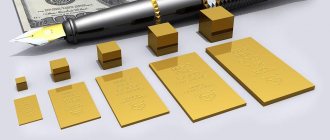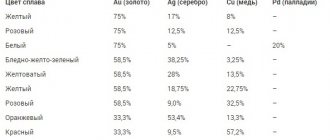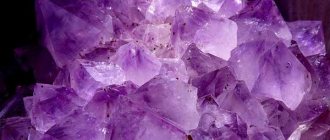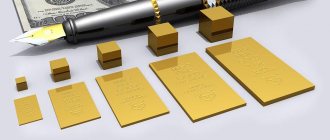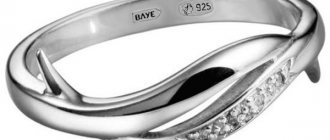For Russian users, the usual units of measurement are grams and kilograms. However, when trading with foreign countries, measurement system inconsistencies often arise. For example, when purchasing silver, the weight is indicated in ounces. Sometimes packages mention double markings - pounds are added. Here difficulties arise in converting foreign measures into native kilograms.
General information
Mass is the property of physical bodies to resist acceleration. Mass, unlike weight, does not change depending on the environment and does not depend on the gravitational force of the planet on which this body is located. Mass m
determined using Newton's second law, according to the formula:
F
=
m a
, where
F
is force and
a
is acceleration.
Mass and weight
The word “weight” is often used in everyday life when people talk about mass. In physics, weight, in contrast to mass, is a force acting on a body due to the attraction between bodies and planets. Weight can also be calculated using Newton's second law: P
=
m g
, where
m
is the mass and
g
is the acceleration due to gravity. This acceleration occurs due to the gravitational force of the planet near which the body is located, and its magnitude also depends on this force. The acceleration of free fall on Earth is 9.80665 meters per second, and on the Moon it is approximately six times less - 1.63 meters per second. Thus, a body weighing one kilogram weighs 9.8 newtons on Earth and 1.63 newtons on the Moon.
Moon mass 7.3477×10²² kg
Gravitational mass
Gravitational mass shows what gravitational force acts on a body (passive mass) and with what gravitational force the body acts on other bodies (active mass). With an increase in active gravitational mass
body, its force of attraction also increases. It is this force that controls the movement and location of stars, planets and other astronomical objects in the universe. Tides are also caused by the gravitational forces of the Earth and Moon.
With increasing passive gravitational mass
the force with which the gravitational fields of other bodies act on this body also increases.
Inert mass
Inertial mass is the property of a body to resist movement. It is precisely because a body has mass that a certain force must be applied to move the body from its place or change the direction or speed of its movement. The greater the inertial mass, the greater the force required to achieve this. Mass in Newton's second law is precisely inertial mass. The gravitational and inertial masses are equal in magnitude.
Mass and relativity
According to the theory of relativity, gravitating mass changes the curvature of the space-time continuum. The greater the mass of a body, the stronger the curvature around this body, therefore, near bodies of large mass, such as stars, the trajectory of light rays is bent. This effect in astronomy is called gravitational lenses. On the contrary, far from large astronomical objects (massive stars or their clusters called galaxies), the movement of light rays is linear. The main postulate of the theory of relativity is the postulate about the finiteness of the speed of propagation of light. Several interesting consequences follow from this. Firstly, one can imagine the existence of objects with such a large mass that the second cosmic velocity of such a body will be equal to the speed of light, i.e. no information from this object will be able to reach the outside world. Such cosmic objects in the general theory of relativity are called “black holes” and their existence has been experimentally proven by scientists. Secondly, when an object moves at near-light speed, its inertial mass increases so much that local time inside the object slows down compared to time. measured by stationary clocks on Earth. This paradox is known as the “twin paradox”: one of them goes into space flight at near-light speed, the other remains on Earth. Upon returning from the flight twenty years later, it turns out that the twin astronaut is biologically younger than his brother!
Varieties of ounces
Before converting one value to another, decide which ounce you are interested in. Ounce is abbreviated as oz. If you see this sign, be aware that you will need to convert ounces to grams to understand the weight of the item. Next to this value, another letter is assigned, depending on the type of ounce. There are several types:
- Troy ounce. Its value is 31.1034 grams. It is by far the most popular, since it is in it that the weight of gold is measured. This process takes place on the precious metals exchange in London. There, the measure of weight is the troy ounce, which, as a guarantor of stability, has accompanied gold for several centuries. A fluid ounce is not a troy ounce. The name originated in the town of Troyes, where fairs were held. Buyers and sellers could not agree and determine the value of coins or bullion bars. Therefore, money began to be equalized by weight. Therefore, this standard is nothing more than following traditions. They even issued several coins that weigh exactly the same as a troy ounce.
- An avoirdupois ounce, or trade ounce, corresponds to 28.35 grams. This is a type of trade ounce that was previously used even in the sale of groceries. Nowadays weight is measured in pounds. This is popular in the USA and England. One pound is the same weight as 16 ounces.
- A pharmaceutical ounce corresponds to approximately thirty grams of the substance.
Units
Kilogram
In the SI system, mass is expressed in kilograms. The kilogram is determined based on the exact numerical value of Planck's constant h
, equal to 6.62607015×10⁻³⁴, expressed in J s, which is equal to kg m² s⁻¹, with the second and meter being determined by the exact values of
c
and Δ
ν
Cs. The mass of one liter of water can be approximately considered equal to one kilogram. The derivatives of kilogram, gram (1/1000 of a kilogram) and ton (1000 kilograms) are not SI units, but are widely used.
Electron-volt
Electronvolt is a unit for measuring energy. It is usually used in the theory of relativity, and energy is calculated using the formula E
=
mc²
, where
E
is energy,
m
is mass, and
c
is the speed of light.
According to the principle of equivalence of mass and energy, an electronvolt is also a unit of mass in the system of natural units, where c
is equal to one, which means mass equals energy. Electrovolts are mainly used in nuclear and atomic physics.
Atomic mass unit
Atomic mass unit ( a.u.m.
) is intended for masses of molecules, atoms, and other particles. One a. e.m. is equal to 1/12 the mass of a carbon nuclide atom, ¹²C. This is approximately 1.66 × 10 ⁻²⁷ kilograms.
Slug
Slugs are used primarily in the British Imperial system in Great Britain and some other countries. One slug is equal to the mass of a body that moves with an acceleration of one foot per second per second when a force of one pound-force is applied to it. This is approximately 14.59 kilograms.
The mass of the Sun is 1.9884×1030 kg
Solar mass
Solar mass is a measure of mass used in astronomy to measure stars, planets and galaxies. One solar mass is equal to the mass of the Sun, that is, 2 × 10³⁰ kilograms. The mass of the Earth is approximately 333,000 times less.
Carat
Carats measure the weight of precious stones and metals in jewelry. One carat is equal to 200 milligrams. The name and the size itself are associated with the seeds of the carob tree (in English: carob, pronounced “carob”). One carat used to be equal to the weight of the seed of this tree, and buyers carried their seeds with them to check whether they were being deceived by sellers of precious metals and stones. The weight of a gold coin in Ancient Rome was equal to 24 carob seeds, and therefore carats began to be used to indicate the amount of gold in the alloy. 24 karat is pure gold, 12 karat is half gold alloy, and so on.
Soft metric weight labeling on food products in Canada
Grand
The grain was used as a measure of weight in many countries before the Renaissance. It was based on the weight of grains, mainly barley, and other popular crops at the time. One grain is equal to about 65 milligrams. This is a little more than a quarter of a carat. Until carats became widespread, grains were used in jewelry. This measure of weight is still used to this day to measure the mass of gunpowder, bullets, arrows, and gold foil in dentistry.
Other units of mass
In countries where the metric system is not adopted, the British Imperial system is used. For example, in the UK, USA and Canada, pounds, stones and ounces are widely used. One pound is equal to 453.6 grams. Stones are used mainly only to measure human body weight. One stone is approximately 6.35 kilograms or exactly 14 pounds. Ounces are primarily used in cooking recipes, especially for foods in small portions. One ounce is 1/16 of a pound, or approximately 28.35 grams. In Canada, which formally adopted the metric system in the 1970s, many products are sold in rounded imperial units, such as one pound or 14 fluid ounces, but are labeled with weight or volume in metric units. In English, such a system is called “soft metric ”
), in contrast to the “hard metric” system (English
hard metric
), in which the rounded weight in metric units is indicated on the packaging. This image shows "soft metric" food packaging with weight in metric units only and volume in both metric and imperial units.
Bibliography
Author of the article: Kateryna Yuri
Ounces to Kilograms Calculator
You convert ounces to kilograms
Calculator - Weight and Mass - Ounces to Kilograms
How many kilograms in ounces - convert oz to kg
1 Ounce (oz) = 0.02 Kilograms (kg)
Ounces An ounce (abbreviation: "oz") is a unit of mass that has several definitions. Often an ounce is equal to 28 grams. Its size may vary in different systems. Today, the most widely used international ounces are avoirdupois, equal to 28.3495231 grams, and troy ounces, equal to 31.1034768 grams.
Kilograms The kilogram (symbol: “kg”), also known as kilo, is the basic measurement of mass in the International System of Units. Defined as a measure equal to the mass of the International Prototype Kilogram (IPK), it is related to the mass of almost one liter of water. It is the only basic unit of measurement that uses the prefix (“kilo”, symbol: “k”) as part of its name. The kilogram is very stable, which is really important, since 4 of the 7 basic units of the international system are directly related to the kilogram.
Conversion of units of Weight and Mass
Convert from
Convert to
oz
=
kg
| Basic units of weight | |
| Carat | car |
| Gram | gr |
| Kilogram | kg |
| Milligram | mg |
| Ounce | oz |
| Lb | lb |
| Ton | T |
| Other units of mass | |
| Assarion | assarion |
| Atomic mass unit (Dalton) | A. eat. |
| Attogram | ag |
| Bekah | |
| Centigram | cg |
| Dalton | |
| Dg | dg |
| Dekagram | dag |
| Denarius | denarius |
| Didrachm | didrachma |
| Drachma | drachma |
| Dina | dyn |
| Exagram | Eg |
| Femtogram | fg |
| Hera | gerah |
| Gigagram | Gg |
| Grain | gr |
| Hectogram | hg |
| Hundredweight | cwt |
| Hundredweight(UK) | cwt |
| Kip | |
| Mite | lepton |
| Megagram | Mg |
| Microgram | µg |
| Mine | mina |
| Mina(Biblical Hebrew) | mina |
| Nanogram | ng |
| Pennyweight | pwt |
| Petagram | Pg |
| Picagram | pg |
| Poundal | pdl |
| Quadrant | quadrans |
| Quarter | |
| Quarter(UK) | quarter |
| Quintal | quint. |
| Scruple | scr |
| Shekel | shekel |
| Slug | |
| Stone | st |
| Stone(UK) | st |
| Talent(Greek) | |
| Talent(Hebrew) | |
| Teragram | Tg |
| Tetradrachm | tetradrachma |
| Ton | |
| English ton | |
| Troy ounce | |
| Pharmacist's pound | |
| Basic units of weight | |
| Carat | car |
| Gram | gr |
| Kilogram | kg |
| Milligram | mg |
| Ounce | oz |
| Lb | lb |
| Ton | T |
| Other units of mass | |
| Assarion | assarion |
| Atomic mass unit (Dalton) | A. eat. |
| Attogram | ag |
| Bekah | |
| Centigram | cg |
| Dalton | |
| Dg | dg |
| Dekagram | dag |
| Denarius | denarius |
| Didrachm | didrachma |
| Drachma | drachma |
| Dina | dyn |
| Exagram | Eg |
| Femtogram | fg |
| Hera | gerah |
| Gigagram | Gg |
| Grain | gr |
| Hectogram | hg |
| Hundredweight | cwt |
| Hundredweight(UK) | cwt |
| Kip | |
| Mite | lepton |
| Megagram | Mg |
| Microgram | µg |
| Mine | mina |
| Mina(Biblical Hebrew) | mina |
| Nanogram | ng |
| Pennyweight | pwt |
| Petagram | Pg |
| Picagram | pg |
| Poundal | pdl |
| Quadrant | quadrans |
| Quarter | |
| Quarter(UK) | quarter |
| Quintal | quint. |
| Scruple | scr |
| Shekel | shekel |
| Slug | |
| Stone | st |
| Stone(UK) | st |
| Talent(Greek) | |
| Talent(Hebrew) | |
| Teragram | Tg |
| Tetradrachm | tetradrachma |
| Ton | |
| English ton | |
| Troy ounce | |
| Pharmacist's pound | |
Conversion result:
Other popular mass and weight calculators
- Carat to Gram
- Carat to Kilogram
- Carat to Milligram
- Carats to Ounces
- Carat to Pound
- Carats to Tons
- Gram to Carat
- Gram to Kilogram
- Gram to Milligram
- Gram to Ounce
- Gram to Pound
- Grams to Tons
- Kilogram to Carats
- Kilograms to Grams
- Kilogram to Milligram
- Kilograms to Ounces
- Kilogram to Pounds
- Kilogram to Tons
- Milligram to Carat
- Milligram to Gram
- Milligram to Kilogram
- Milligram to Ounce
- Milligrams to Pounds
- Milligrams to Tons
- Ounce to Carats
- Ounce to Gram
- Ounce to Kilogram
- Ounce to Milligram
- Ounce to Pound
- Ounce to Ton
- Pound to Carat
- Pound to Gram
- Pound to Kilogram
- Pound to Milligram
- Pound to Ounce
- Pound to Tons
- Ton to Grams
- Ton to Kilos
- Ton to Milligrams
- Ton to Ounces
- Ton to Pounds
